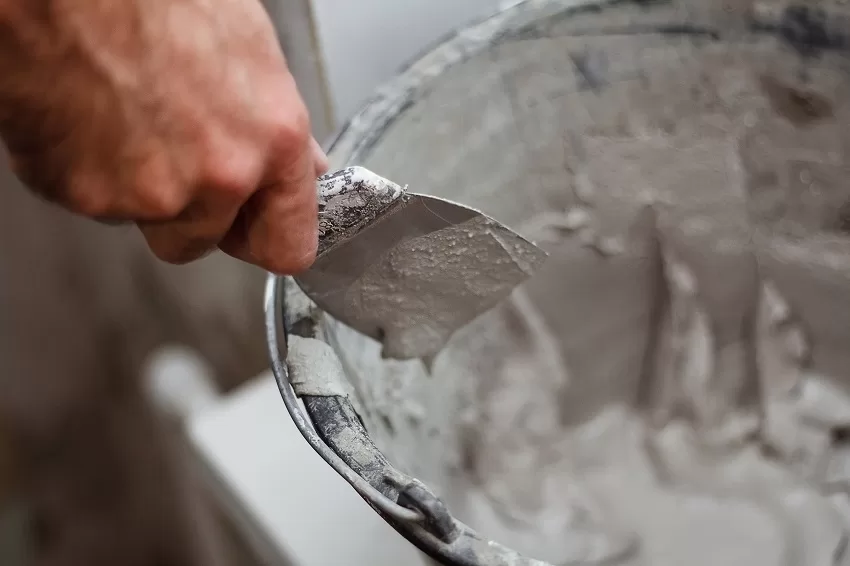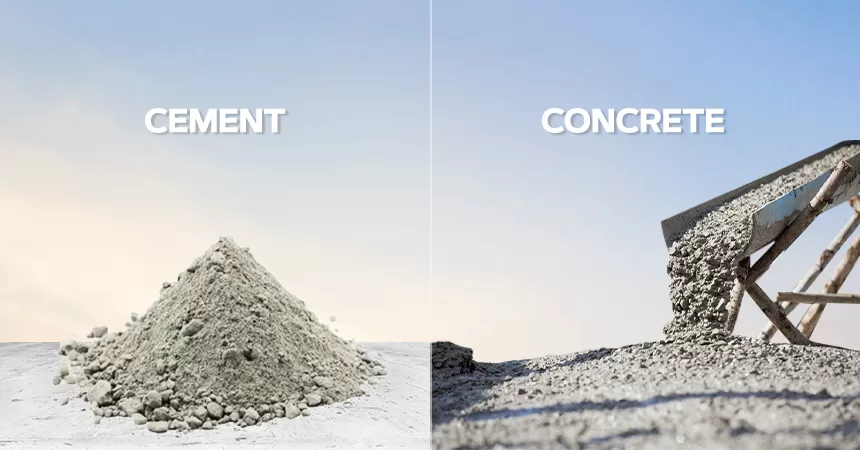Cement is essential in construction projects. Its significance is in producing constructions with strength, longevity and adaptability. Cement helps with safety precautions due to its fire-resistant properties. The formability and short curing time of cement also contribute to the speed and cost-effectiveness of building. Hence, a cement clinker is of utmost concern in construction projects.
What is Cement Clinker?
First, let us know what a clinker is.
A clinker is a type of material that forms when coal or other organic materials are exposed to high temperatures in a furnace or kiln.
Now let us see what a cement clinker is.
Cement clinker is a type of substance formed during the cement-making process. It is created by heating a mixture of limestone and clay at extremely high temperatures in a kiln. This pebble-sized dark grey clinker, when ground into a fine powder, becomes cement and combined with other ingredients to form cement variants. Cement is used to make building materials such as concrete, mortar and plaster.
How Is Cement Clinker Formed?
Here is a step-by-step process of how cement clinker is produced:
Sourcing Raw Materials
The primary raw materials used in the production of cement clinker are limestone and clay. These materials are typically sourced from quarries and then transported to the cement plant.
Crushing and Grinding
The limestone and clay are crushed and finely grounded into a powder. This process increases the surface area of the materials, thus allowing for better chemical reactions during the kilning stage.
Mixing
The powdered limestone and clay are thoroughly mixed in the desired proportions to ensure the proper chemical composition of the clinker.
Kilning
The raw mix is put into a rotary kiln, which is a long, cylindrical furnace. Inside the kiln, the materials are exposed to high temperatures, ranging from 1400°C to 1500°C. The intense heat causes the raw mix to undergo several chemical reactions.
Calcination
The first significant reaction that occurs is calcination, where the limestone (calcium carbonate) decomposes into lime (calcium dioxide) and carbon dioxide. This reaction releases carbon dioxide gas and requires a significant input of heat.
Clinker Formation
As the temperature rises further, the raw mix undergoes a series of complex chemical reactions. From these reactions, compounds are formed and they constitute the main components of the cement clinker.
Cooling
After the clinker is formed, it is rapidly cooled to prevent the reformation of compounds. The rapid cooling process is crucial to achieving the desired properties of the clinker.
Grinding
The cooled clinker is then ground into a fine powder with the addition of a small amount of gypsum. This process enhances the reactivity of the clinker and allows it to harden when mixed with water, thus forming cement.
Types of Cement Clinker
There are several types of cement clinkers produced for different applications. Here are some common types of cement clinker:
Ordinary Portland Cement (OPC) Clinker
This is the most common type of clinker used in the production of OPC. Hence, OPC clinker is versatile and widely used in general construction.
Sulphate Resistant Clinker
This type of clinker is designed to have better resistance against sulphate attack from sources like soil, water or chemical exposure.
Low Heat Clinker
This clinker has properties that reduce the heat generated during the cement hydration process. It is beneficial in large concrete pours or mass concrete constructions where excessive heat can cause cracking.
White Clinker
White clinker is used for the production of white cement, which is desired for aesthetic purposes in construction. Since, it is white in colour, it is commonly used in decorative applications.
Low-Alkali Clinker
This is produced by reducing the alkali content in the clinker. This is done to minimise the risk of alkali-aggregate reaction (AAR) in concrete, which can cause cracking and deterioration.
Belite Calciumsulphoaluminate Ternesite (BCT) Clinker
This is a type of clinker designed to reduce carbon dioxide emissions and improve energy efficiency. Thus, it contributes to reduced electricity costs during production.
Chemical Composition of Clinker
The four major components of clinker are as follows:
Alite (C3S):
It is chemically known as Tricalcium Silicate (C3S). It is a primary constituent of cement clinker, typically comprising around 50-70% of its composition. It forms because of the fusion and chemical transformation of raw materials in the kiln during cement production. Alite possesses a crystalline structure composed of calcium, silicon, and oxygen atoms. It is highly reactive with water and contributes significantly to the early strength development of cement.
Belite (C2S):
Also known as Dicalcium Silicate (C2S), Belite constitutes approximately 15-30% of cement clinker. It forms alongside alite during the clinker-formation process. Belite has a similar crystalline structure to alite but is less reactive with water compared to alite. Its hydration process is slower and does not contribute as significantly to early strength as alite. However, belite plays a crucial role in the long-term strength development of cement.
Aluminate (C3A):
Tricalcium aluminate forms a minor portion of around 5-10% of cement clinker. It contributes to the early setting of cement. C3A hydrates rapidly upon contact with water contributing to the initial setting and hardening of the cement. However, excessive amounts of C3A can lead to rapid setting and potentially impact workability.
Ferrite (C4AF):
Tetracalcium aluminoferrite is another minor component ranging around 5-15% in cement clinker. It reacts with water variably and has low hydraulic properties. However, it plays a role in the later stages of cement hydration and contributes to the strength development of cement.
Uses of Cement Clinker
Cement clinker is the primary ingredient used in the production of cement. When combined with gypsum and ground into a fine powder, cement clinker forms the basis of various types of cement, such as OPC, which is widely used in construction.
Unlock the strength with JK Cement – one of the leading cement manufacturers in the country. JK Cement offers an array of grey cement to meet your every construction need.
FAQs
What is cement clinker and what is it made of?
Cement clinker is a nodular material that forms the basis of cement production. It is produced by heating a mixture of limestone, clay and other materials at high temperatures in a kiln.
What role does cement clinker perform in cement production?
Cement clinker acts as the main ingredient in the production of cement. It provides the necessary binding properties that allow cement to harden and develop strength. When mixed with gypsum and other additives, cement clinker is finely ground to create cement powder, which can be mixed with water to form a paste. This paste then hardens and binds together aggregates, such as sand and gravel, to form concrete.
Is it possible to use cement clinker without further processing?
Cement clinker alone is not suitable for use without further processing because it lacks the desired characteristics of a usable cement product. The clinker needs to be finely ground and mixed with additives to achieve the necessary properties for construction applications.
What economic considerations influence cement clinker production and pricing?
Several economic factors influence cement clinker production and pricing. These include the availability and cost of raw materials, energy prices, transportation costs, labour expenses, regulatory compliance and market demand. Fluctuations in these factors can impact the overall production costs, supply, and ultimately the pricing of cement clinker in the market.














